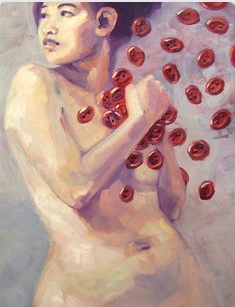
I recently read a transcript of a teaching Bonnie Bainbridge Cohen gave in Ghent, Belgium. If you don’t know Bonnie’s work and you’re at all into movement, dance, yoga, healing, Craniosacral Therapy, Occupational Therapy, Physical Therapy, or the like, you’ll want to find out about her.
She was speaking about how when an embryo develops, the first tissues to populate an area of the body are the fat, immune, blood, and bone cells. The muscles and nerves don’t come in until the very end. She points this out because of the big kick these days about working with the nervous system and the brain. Yes, she says, the brain and nerves are important, but if you really want the body to learn how to calm down and work coherently, it’s important to bring conscious awareness to the cells that were there first. Her practice is one of connecting with the very real and palpable qualities belonging to each early tissue type. She trains people to do this by encouraging trust in their own experience, rather than an “idea” about what the “right” experience should feel like.
Bonnie Bainbridge Cohen has been an inspiration of mine since I was a Chiropractic student. In 1995, at my first Craniosacral Therapy course. her book, Sensing, Feeling, And Action (Contact Editions,1993) was available at the store. I leafed through it on and off, only gleaning bits of what she was saying. Over the next fifteen years, I began to get a window into what she’d been on to since the 70’s.
One of the findings that her work inspired is that tissues not only have consciousness, or volition, in that they each have an imperative that drives their physiology and structure, but they have mind. Nowhere is this more apparent than when the body starts hurting.
My own experience of the mind of the body happened while meditating one day. While undertaking the practice of watching “mind”, I understood that mind did not mean “head”, “brain”, or “beliefs”, but instead, meant an energetic envelope that guides the behaviour of its contents, much like wind directs the flow of water. I decided to try meditating on an organ instead of my thoughts, but with the same technique I would with thinking. I could see the organ, I could feel it acting up in the form of tension in my side, and then I would imagine that I could gently offer the option of a more coherent state to my organ— just to see what it would do. Wouldn’t you know it? Faced with the option, the organ went for it! It chose the more coherent state! Don’t get me wrong, I had to do it over and over again, when I probably “should have” been watching my breath, but it seemed that “mind” was everywhere, and that the mind of bones, organs, and arteries could be “Vipassana’ed” just like the mind of thinking could be!
The opportunity Bonnie offers us is to use the intrinsic coherent mind of our tissues, the state of coherence that is our birthright, the one from before we were ever imprinted with other “minds” like early challenges and ancestral imprints, as an anchor to return to health. Body-Mind Centering, the work she has pioneered is an amazing set of tools to approach returning to health without necessarily confronting the trauma directly. Trauma’s there, there is no denying it, but by coming into relationship with the coherence of our primordial architecture, the one that was first inspired out of the great human developmental fields known as morphogenetic fields, we can essentially retrain the mind of all of our tissues, and integrate trauma in a different way.

